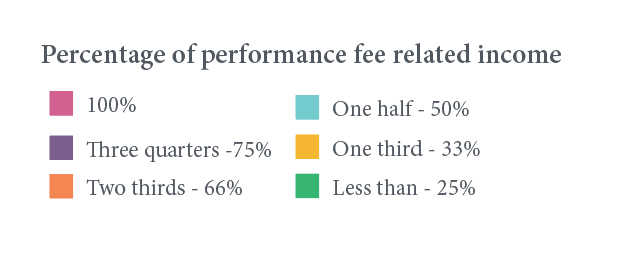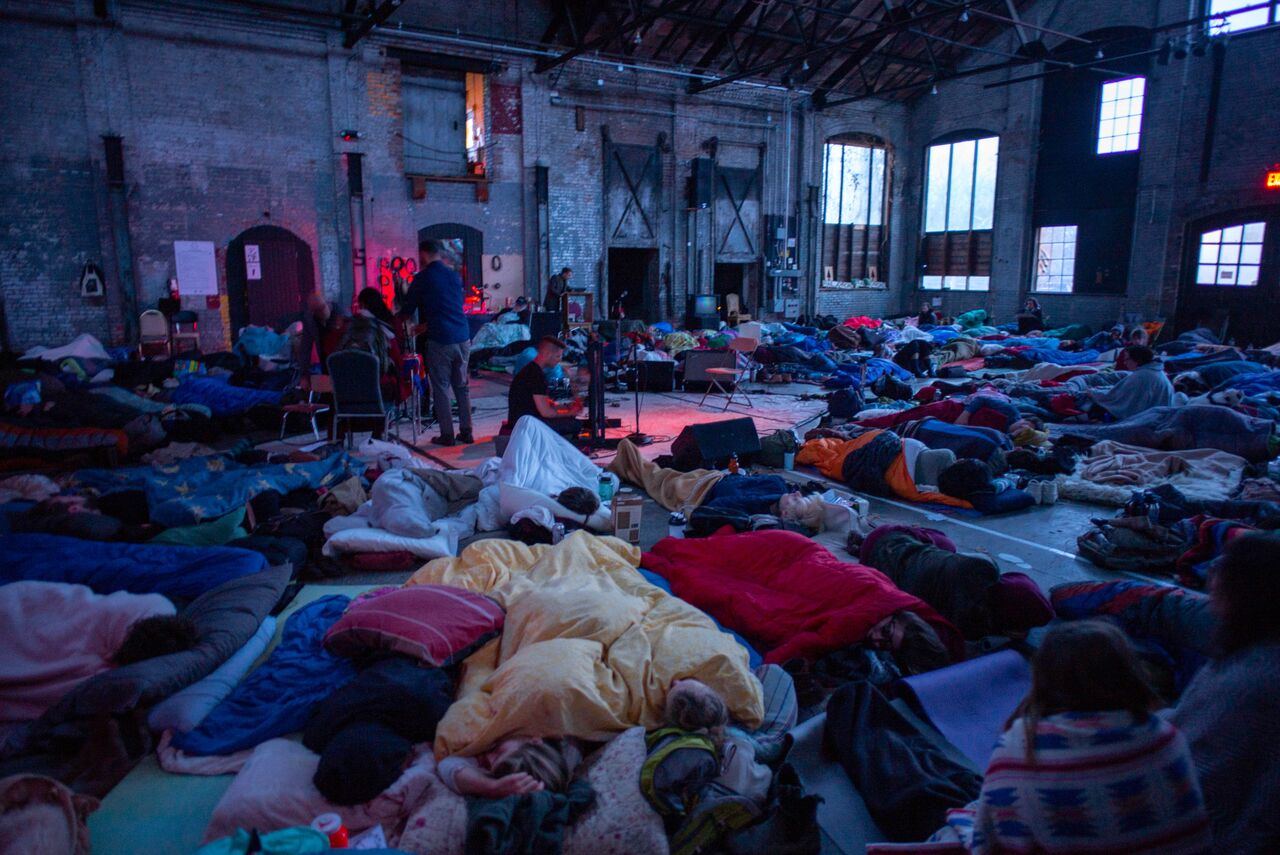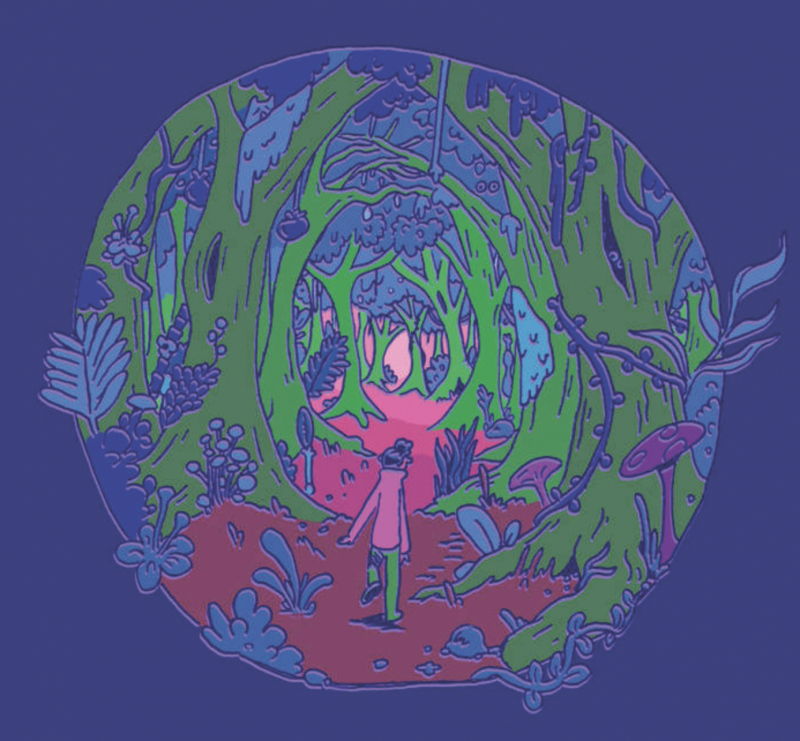Photo: Kiki Vassilakis
At the end of each local music survey, musicians had the opportunity to share the greatest challenges they face in their career as well as what they would like to communicate to the business end of the music community. Nearly half the surveyed artists offered anecdotes, descriptions and suggestions on how to develop a scene that helps keep both its artists and venues sustainable and thriving.
First thing’s first: Pay artists fairly
“I feel that the single greatest challenge stems from musicians being perceived as ‘added value’ or auxiliary to a venue setting,” Kristoph DiMaria aka Ragliacci Rags says in the survey. “I feel that there may be a devaluing of some musicians’ cultural product in this way, which could lead to earnings that seem incongruent to the amount of work it takes to produce the art. I would suggest venue owners consider the amount of ‘unpaid’ work (or work at cost to the artist) that goes into a performance.”
Artists want venue owners and those booking shows in area spaces to understand that they are making a significant investment —the cost of instruments and equipment as well as time spent writing, practicing, recording and loading in and out of gigs—and would appreciate compensation for drawing an audience to their spaces.
“Asking a band to provide and set up all gear, run a PA and promote for $300 for three hours of work plus set up and break down, split five ways for a five-piece band is absurd,” Tracy Madison of Menza Madison Band says. “It’s like asking a catering company to feed 350 people on their own dime because they should be grateful for the exposure.”


Musicians shared that open and honest communication about pay before a gig takes place is best:
Is there a guarantee the band walks away with? Are you taking a percentage? Will you be paying directly after the show or later?
Other artists added that they should not be responsible for selling a set number of tickets ahead of time in order to hold their place on a show (i.e. pay to play) and pay negotiations should consider the requirements of individual performers. Many have a minimum booking rate they would be happy to share.
“Always ask the artist how much they charge or give them a well-paying price,” Jorim Motley aka Pink Nois says. “Some artists would gladly do free shows for the community because they love the community, but that doesn’t mean they should have to.”
Participating in cross-promotion: It’s everyone’s job
Being a local musician in 2020 means you wear many hats: musician, social media manager, promoter, tour organizer, booking agent, merchandise manager. Many artists also work day jobs and side gigs to pay their bills and make their art.
“There’s not enough time in the day between writing, recording new originals, learning new songs, booking new gigs,” singer-songwriter Jeff Brisbin says. “I’ve averaged 250-260 gigs a year for eight years.”
It’s a head-spinning feat and many area artists feel that venue owners and organizers should be sharing the brunt of this work in terms of promoting upcoming shows in a timely and consistent manner.
“We could absolutely make each gig/performance part of a symbiotic relationship. It helps so much when the venue promotes us as much as we promote the show ourselves,” Caity Gallagher of Honey Slider says.
Troy Music Hall Executive Director Jon Elbaum says his team tries to encourage promotion on both ends as much as possible.
“We partner with the artists. I think it’s important, particularly for artists who aren’t touring full time, for them to take the time to develop their social network and help the promoter or venue to get the word out. We’ll post and repost from each other’s Facebook pages and such. It’s primarily on social media. We’ll do the flyers and post on our websites as well, but it’s the people who are following these artists who help create this ripple effect.”
Sarah Craig, executive director and booking manager at Saratoga’s Caffé Lena, says that booking from the local market is helpful in promoting the venue—which has a show every day, with multiples on weekends—because local artists tend to have a loyal, steady following and are already on top of their own promotion. Caffé Lena, though, only books local acts once or twice a month, she says.
“There are certain months I lean more heavily on local artists—June and September—because it’s a riskier time of year for us and harder to bring in an audience. The local people can really help promote the shows, where with the touring artists, it’s almost entirely on us for promotion.”
Craig, Elbaum and local promoter Greg Bell says, speaking on behalf of the The Hollow, where he books frequently, each say they rely heavily on social media (Facebook, Twitter and Instagram) and their prospective websites as well as sponsorship spots with WEXT, WEXQ, WAMC Nippertown and New York State Music.
Market oversaturation
Many artists raised the point that the Capital Region is not only overflowing with musicians, but venues to play, as well. On top of the many music-centric venues, musicians are playing bars, patios and restaurants. This can make drawing a crowd and filling a room challenging—particularly when many weekends have several shows happening at the same time.
Some places do well with populating their schedules with local music and drawing a fairly regular crowd. Places like The Low Beat and Paulys Hotel in Albany host original and cover bands several times a week. Super Dark Collective keep crowds filling Desperate Annie’s in Saratoga twice a week. Gug’s in Glens Falls is a seasonal mecca for those north of the Capital Region.
But sometimes bars and cafes booking shows tend to make performers more “background noise” than the center of attention, and small venues seem more likely to book primarily cover bands for the promise of a moderately sized crowd.
“The biggest challenge at the Hollow, because it is a restaurant, is soundchecking or loading in early while people are still eating and the dinner crowd doesn’t necessarily want to hear a punk band soundchecking,” Bell says. “Also during the holidays, they do a lot of parties that are very lucrative so there are less dates to work with. I’ll have a band loading in at 6 o’clock and they have a holiday party until seven so we have to wait. But the Hollow and I work really well together in balancing that. They go out of their way to get the place ready for bands as quickly as possible.”
And some music-centric venues, though they sell out and have a significant following, serve a very particular demographic—such as the historically acoustic folk-centric Caffé Lena.
“By folk, we mean bluegrass, blues, acoustic rock as well as traditional folk. We have a very active jazz program, a little bit of classical plus poetry and storytelling,” explains Craig.
Other venues, such as the massive orchestra-oriented Troy Music Hall, have to consider that the acoustics of their performance space would do a disservice to heavily amplified, bass heavy genres like rock and roll and hip hop, explains Elbaum.
“We try to represent the diversity of the community but the kinds of things that work here are those that don’t have a lot of amplification,” he says. “We try to play to our strengths and the acoustics we’re known for.”
It raises the question:
How do we invest in new, original work while drawing enough of an audience that both the venue and the artist can benefit?
“I would thank some [venues] for inviting new, experimental work and making space for that on the stage,” Rags says. “Taking risks to support original material is crucial to the development of an artist and the cultural community. I would encourage others to do the same.”
Even for the venues that rely heavily on touring, mainstream and national acts, there is an opportunity to invest in and build the local music scene in a fair way.
“I try to work with agents as much as possible to make sure a local band is always opening for a touring headliner,” Bell says. “Having a local band will be better for them than including someone from their label that no one knows. Usually, they’ll take my advice. Any opening act I book will usually make about $200.”
Investment in audience building
Bell continued to explain that there’s no set way of booking and pricing shows or building a following in this business but maintaining your own booking minimum and taking advantage of opportunities like opening for a small touring band can open up some big doors for a musician’s future career.
“A lot of this has nothing to do with the talent of the band at all, some of the most talented bands in the area make shit money right now. A lot of it is just exposure some of them have already had. One of my goals is to change that. I’m having local bands open for headliners and booking them as much as I can because I want them to be the headliner—to get to a point where they’re selling a room out. Typically, the bands I work with are busting their ass to get people out to see them. If a headliner sees an opener bring 70 people for their opening slot, they may say something to their agent.”
He describes a recent scenario in which local band Useless Cans opened for Northampton folk punk band Bella’s Bartock at Parish Public House in Albany. They loved the Albany band so much they booked them on four other shows of their tour, introducing them to new markets and audiences.
Venue wise, Craig says, “A lot of [audience building] is cultural. We’ll get up there as we introduce an act, encouraging people to pick up the schedules at their tables, look through it and pick something they’ve never heard of—give it a shot.”
After the venue’s recent $2 million revitalization project improving the accessibility of the space, attendance has grown in a big way, she says. “It coincided with us expanding the different types of music we do here. We weren’t able to do as much jazz as we do now.”
An important aspect of audience building, as many musicians pointed out in the survey, is providing a comfortable and pleasant sounding space for people to enjoy music. Bars and cafes often operate without a sound system and book artists relying on an audience donation.
Musicians have asked that these businesses take into account the value live music adds to their space. While there are many independent sound engineers in the area with their own equipment for hire, musicians welcome venues that have a PA system onsite—with someone there to operate it.
“The sound person, sound system and the opportunity to have a thorough sound check are arguably the most critical aspects of having a good show,” Rick Spataro of Onlyness says.
Other venues focus on series targeted to specific demographics. Elbaum says Troy Music Hall is working to grow their audience base through a mix of programs throughout the year.
“We’re actively going after younger audiences. Our summer series in the park is targeted to elementary students, our Music at Noon series is all over the map—from homeschooled kids, student groups, seniors or office people on break. With our Lift Series we’re targeting more of the millennial demographic.”
Despite some disconnects in the music scene, it’s important to note that the motivation behind this survey was not to pit the community of artists and business owners against each other, but to promote an understanding of each side’s professional and financial situation. The survey makes it clear that many venues care about promoting new and interesting art and artists want the opportunity to play them.
“Thank you for providing live music to audiences without breaking their banks,” musician Bob Demers says.
“I love the music scene in the Capital Region, it’s been a huge part of shaping who I’ve become as a musician and person,” Josh Marré of Blue Ranger says. “I hope to meet like-minded folks out of the thing, that’s basically it, you know? People around here rule, and the amount of talent that certain promoters aren’t even aware of speaks to how we’ve gotta show up for each other.”






Trackbacks/Pingbacks